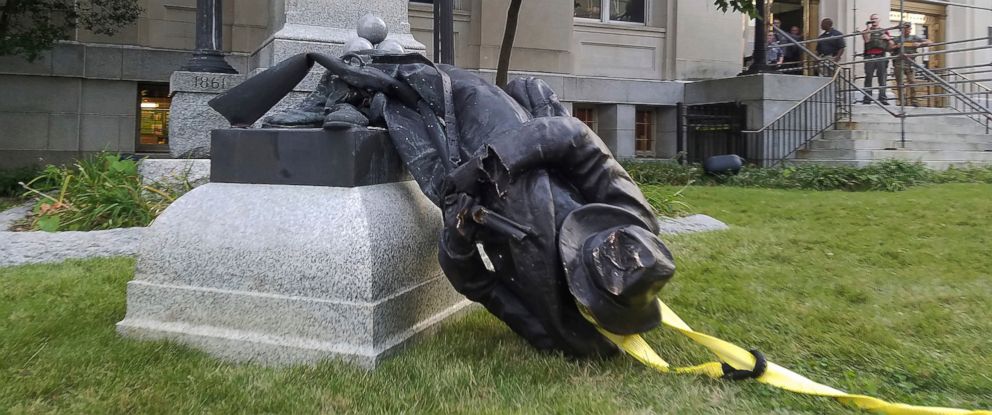“Remembrance” or “reverence”
Protestors pulled down this statue of Confederate Solider, Robert E Lee, in Durham North Carolina.
September 15, 2017
“There is a difference between remembrance of history and reverence of it,” Mayor Mitch Landrieu said as a statue of General Robert E. Lee cast its last shadow over the city of New Orleans.
As of May 19, New Orleans became one of many cities to remove their Confederate monuments. As these dark pieces of history come off the streets, protestors and counter-protestors have risen in their place as this deep-rooted, historical debate over the removal of statues becomes a national issue.
“The view in the South is that it is part of their heritage,” Jon Hill, English teacher, said. “Some people want to keep them and others don’t. It’s a dark part of our history, but it is a part of it.”
To a certain extent, the monuments not only reflect people and events, but, more importantly, what they stood for. Much of the controversy over the monuments has risen from whether they have been displayed in “remembrance” or “reverence”.
“Personally, I would want the statues to be removed since they are a symbol of racism, but they also show history and how racism came to be and how we’ve tried to conquer it and tried to get over it,” junior Rachelle Licovali said. “But racism isn’t gone today.”
As the validity of these monuments comes under fire, a question to consider is whether the problem lies with people rather than the statues themselves.
“Leaving a statue up, is that going to really affect what’s going on?” Hill said. “What’s really going on is that we are much more alike than we think. White supremacy is always a bad thing. It’s not like they just don’t like Black people or Hispanic people or Asian people. They don’t like everyone except themselves. They don’t even like other whites that don’t agree with them. That’s what makes them so bad and dangerous.”
At the center of this issue is people’s understanding of the meaning behind these symbols and the unavoidable ties they have with racism and discrimination.
“People don’t really understand what the rebel flag represents,” Hill said. “It represents a hierarchy in the South during that time period when everybody but them, even poor whites, were not accepted.”
“I think everyone should be aware of what it means,” junior Audia Wilson said. “There is no positive aspect to it.”
Another view that has been taken into consideration is the potential learning value of the statues.
“I think it would be much better to put the statues in museums because that’s where you put history in general,” Licovali said. “We don’t have to display them on college grounds. That’s just fueling racism by showing that these figures are okay to display on public property instead of a historical setting.”
“Instead of just having a statue there, we need to put some kind of writing that describes why that statue symbolizes racism and how we need to avoid going to back to that kind of time,” Licovali said.
Government teacher John Smith, proposed an alternative possibility.
“Maybe the problem isn’t that we need to remove old statues but erect new ones,” Smith said. “If the statues were erected for oppression, put another statue next to it and make it a Civil Rights monument. We need to teach people we have come out of that era.”
As old cities with old streets are flooded with protestors and counter-protestors, statues of metal and stone watch over the same fight for perhaps the last time.
“The root of the problem is that people aren’t accepting or empathetic of others,” Hill said. “And once we can get past that point, then we can look at the other person’s ideas and thoughts and work together.”




